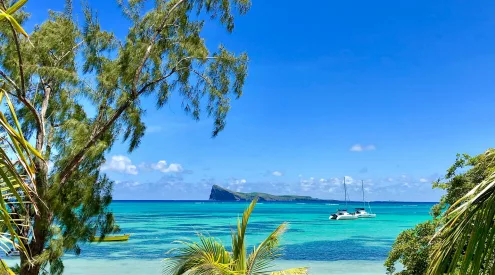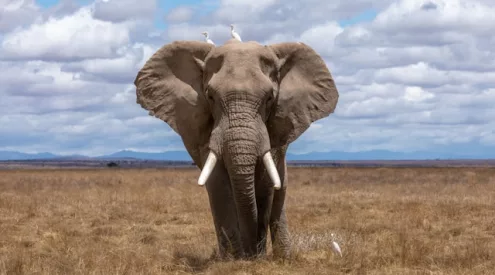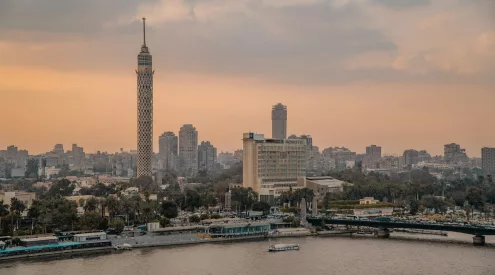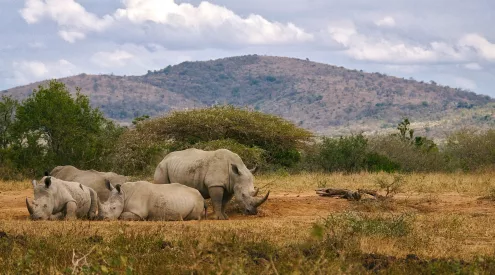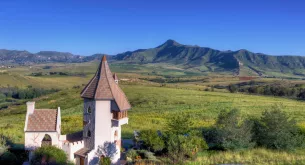For the first time in six years, an elephant has been sighted in Senegal’s Niokolo-Koba National Park, rekindling hope for the survival of the species in this protected area.
This marks the first confirmed sighting of Ousmane since 2019, when the park’s elephant population was believed to have dwindled to just five to ten individuals — a fraction of the hundreds that once roamed there.
Grainy, black-and-white camera trap footage captured the moment a bull elephant — estimated to be between 35 and 40 years old — wandered into frame at night, pausing to look at the lens before disappearing back into the forest. The elephant has been named Ousmane, after a dedicated park ranger, as reported by Mongabay News.
A flicker of hope
With no sightings for years, many conservationists feared the worst. “This video reignited hope that elephants are in the park,” said Philipp Henschel, regional director for West Africa and Central Africa at Panthera, a conservation nonprofit that installed the camera traps in collaboration with Senegal’s National Parks Directorate. “He might not be the last elephant currently alive in this ecosystem.”
Henschel also noted that Ousmane is a hybrid, with ancestry that includes both the critically endangered African forest elephant (Loxodonta cyclotis) and the savanna elephant (Loxodonta africana).
The long decline
The decline of elephants in the region — and across Africa — began during the colonial era, driven by rampant ivory poaching and widespread habitat loss. In Niokolo-Koba, elephant numbers dropped from several hundred in the 1960s to fewer than ten in recent years.
The ecological impact was severe: many other wildlife species saw sharp population declines, prompting UNESCO to place Niokolo-Koba on its World Heritage in Danger List.
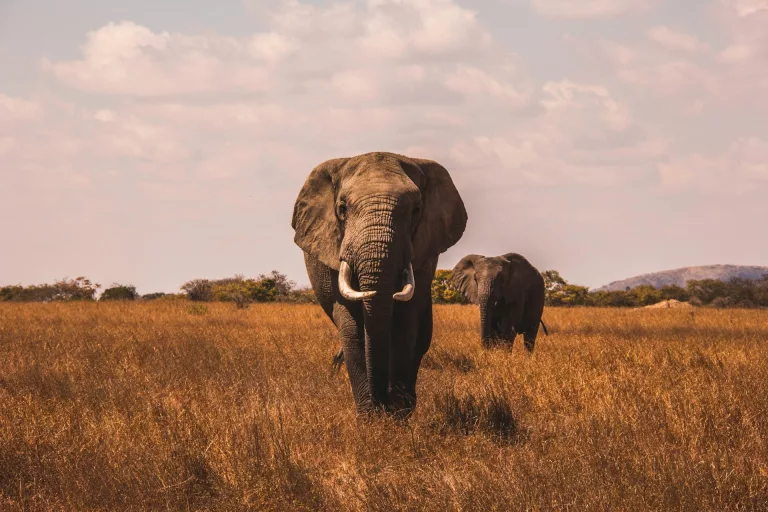
Picture not affiliated with Senegal/AJ Robbie/Unsplash
Turning the tide
Since 2011, however, things have begun to change. Senegal’s National Parks Directorate, working closely with Panthera, launched a comprehensive conservation and monitoring programme across the park’s 9,000 square kilometres (3,500 square miles) of savanna and dense forest.
The park is now a vital refuge for a wide range of threatened species. It shelters one of only two remaining West African lion (Panthera leo) populations and serves as a critical habitat for western chimpanzees (Pan troglodytes verus), western giant eland (Tragelaphus derbianus derbianus), African wild dogs (Lycaon pictus), and the region’s largest remaining leopard (Panthera pardus) population.
In 2024, Panthera’s camera traps also captured footage of an endangered giant pangolin (Smutsia gigantea) — the first sighting in the park in 25 years.
ALSO READ: Bush & Beach: Best African destinations that offer both
A symbol of resilience
Ousmane’s return has reignited discussions about the possibility of reviving the elephant population in Niokolo-Koba. “Which is why this observation of this individual was so important,” said Henschel. “It shows us to really never give up hope on these extremely rare species.”
Panthera has invested more than $6 million in conservation efforts in the park, while local forest rangers have ramped up anti-poaching patrols. These combined efforts have borne fruit: in 2024, UNESCO removed Niokolo-Koba from the World Heritage in Danger List.
What comes next
Ousmane’s appearance is more than just a rare sighting — it’s a symbol of possibility. “Watch this space,” said Henschel. “We’re still searching … within a year or two, we have more good news.”
Follow us on social media for more travel news, inspiration, and guides. You can also tag us to be featured.
TikTok | Instagram | Facebook | Twitter
ALSO READ: Bucket-list wildlife experiences you can only have in South Africa


